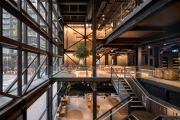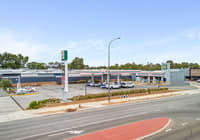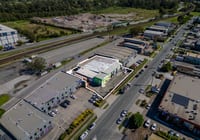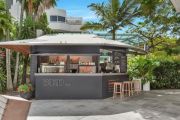
Two 'humble' Australian buildings win bragging rights at the World Architecture Festival
In global architectural terms two of the three Australian projects that won their categories in the World Architecture Festival and its ancillary Inside Festival this year are so relatively humble in scale that they’re almost incidental, even in the regional locations in which they were built.
The most extreme example is Brisbane practise Conrad Gargett’s copper-clad, tall but tiny “Piano Mill” set on architect Bruce Wolfe’s own land at Stanthorpe, near the south-eastern Queensland border.
Only nine metres high and with 4.5-metre wall lengths, the quirky folly that’s an ode to the importance of home-made music in the colonial outback, beat out 15 other shortlisted projects in the Culture category.
These included a massive concert hall on a waterfront site in Mexico, a svelte, low-line Museum to Migratory Birds in Denmark, major new art museums in China and Tehran, and even Rem Koolhaus’ 2017 iteration of the temporary M Pavilion, which is an annual set up in the parklands of Melbourne.
Built to house 16 old pianos and to be used as an erstwhile performance space, “The Piano Mill” that Wolfe sees as a musical instrument in itself, impressed the WAF judges as being “an instrument in an orchestra of trees”.
In the Amsterdam forum that in the past few days has seen a 2000-strong gathering of the world’s leading architects, and where one of the keynote speakers, Reinier de Graff, mocked the lunacy of so many cities (Melbourne and Adelaide included) constructing tall residential “zombie towers” built not to be lived in but as shelf investments, it was intriguing how many small and delicately nuanced projects got a gong.
In the Civic and Community category that had complexes as large and sophisticated as the 48,000-square-metre Palace of Justice in Spain in the running, it was Sydney firm CHROFI that won the main prize for a sharp “sculptural gateway” that now links the main commercial street of Maitland with the long over-looked “asset” of the Hunter River.
The brick and timber Maitland Riverlink that CHROFI worked on with landscape architects McGregor Coxall, and that they call “a public living room”, impressed the WAF judges with its “clarity and simplicity”.
In the shortlist running up to the annual WAF, Australia was one of the most numerically represented countries, rating just behind China. Yet this year, we didn’t pull off as many wins as in previous years.
Perth’s Iredale Pedersen Hook, a winner for the Use of Colour on a remote WA renal clinic in 2017, managed a High Commendation in the Schools category this year for their Highgate Primary School.
Conducted as a parallel event, the World Festival of Interiors saw only two Australian firms emerge in citations.
And here again a small, exquisitely original project, “Space Time” by Melbourne’s Russell + George, was highly commended in the Creative Reuse category for being capable of such incredible functional flexibility that it can shape-shift to the extent that there are no idle spaces within the small North Melbourne building from morning until close of business.
On another scale and, like Space Time, already a multiple winner in all sorts of local and international award programs, the interior spaces of BVN’s three-part and water-laced $194 million Australian Embassy in Bangkok was applauded by the jury for “making a great connection between the urban fabric and the public space with a great transition between the Australian and Thai elements”.
The Embassy took out the Civic, Culture and Transport award.











